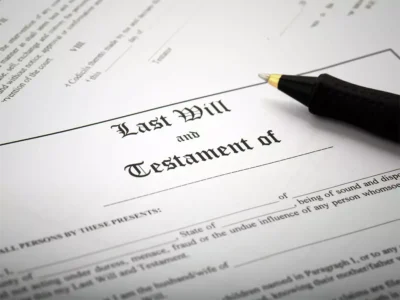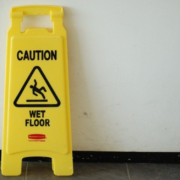Birth injury medical negligence happens when a healthcare provider fails to give the right care during childbirth, leading to harm. This can have serious, long-lasting effects on both the baby and the family. Understanding the different types of birth injuries, their causes, and their impact is crucial for those affected.
Steps to Take After Suspecting Medical Negligence
When you suspect medical negligence in a birth injury, it’s crucial to act promptly and methodically. Here are the steps you should follow:
Documenting the Incident
Start by documenting the incident as thoroughly as possible. Write down everything you remember about the events leading up to, during, and after the birth. Include details about the medical staff involved, the procedures performed, and any unusual occurrences. Collect all relevant medical records, including prenatal care, ultrasounds, and delivery notes. If there were any witnesses, such as nurses or family members, their testimonies can be invaluable.
Seeking Medical Opinions
Consult another qualified medical professional who specializes in birth injuries to get a second opinion. This can help determine whether the care provided was below the accepted standard and if it contributed to the injury. A second opinion can provide an objective assessment of the situation.
Consulting a Birth Injury Lawyer
To navigate the legal complexities, it’s essential to consult a birth injury lawyer. An experienced attorney can evaluate your case, help gather evidence, and represent your interests. They can also negotiate with insurance companies and, if necessary, represent you in court. Before you file a medical malpractice case, contact the doctor or medical professional who caused your injury. Explain what happened and see if they can fix it.
Legal Process for Birth Injury Lawsuits
Navigating a birth injury lawsuit can be complex, but understanding the steps involved can help families seek justice and compensation. Here’s a breakdown of the process:
Filing the Lawsuit
The first step in pursuing a birth injury claim is to file a lawsuit. This involves drafting a formal complaint that outlines the alleged negligence and the harm caused. The complaint identifies all parties involved and sets the stage for the legal proceedings. Filing the lawsuit officially starts the process of seeking compensation.
Gathering Evidence
Collecting evidence is crucial for building a strong case. Your legal team will gather various forms of evidence, such as:
- Medical records from prenatal care, labor, and delivery
- Expert testimonies from medical specialists
- Photographs or videos of the injuries
- Statements from witnesses present during childbirth
- Treatment records showing ongoing care and costs
This evidence helps prove that medical negligence occurred and supports your claim for compensation.
Negotiating Settlements
Once the lawsuit is filed and evidence is gathered, the next step is negotiating a settlement. Lawyers will negotiate with the medical professionals and their insurance companies to reach a settlement that covers medical expenses, ongoing care, and other related costs. If a settlement cannot be reached, the case may proceed to court. However, most personal injury lawsuits, including birth injury cases, are settled out of court.
Understanding these steps can empower families to take action and seek the justice they deserve.
Proving Medical Negligence in Birth Injury Cases
Establishing Duty of Care
To prove birth injury medical negligence, the first step is to show that the healthcare provider had a duty of care. This means they were responsible for providing a certain level of care to the patient. This duty is based on the relationship between the patient and the healthcare provider.
Demonstrating Breach of Duty
Next, it must be proven that the healthcare provider breached this duty. This can happen if they used medical instruments incorrectly, didn’t monitor the mother and baby properly, or ignored signs of fetal distress. These actions or lack of actions show that the provider did not meet the expected standard of care.
Linking Negligence to Injury
Finally, it is crucial to link the breach of duty directly to the birth injury. This often requires gathering compelling evidence like medical records and expert testimony. The evidence must clearly show that the healthcare provider’s negligence caused the injury. This step is vital in proving medical malpractice in a birth injury lawsuit.
Compensation and Support for Affected Families
When a child suffers a birth injury due to medical negligence, families often face overwhelming emotional and financial challenges. Fortunately, there are avenues to seek compensation and support to help manage these difficulties.
Choosing the Right Birth Injury Lawyer
Selecting the right birth injury lawyer is crucial for seeking justice and compensation for preventable birth injuries. Here are some key points to consider when making your choice.
Preventing Birth Injuries Through Awareness and Advocacy
Educating Expectant Parents
One of the most effective ways to prevent birth injuries is by educating expectant parents. Knowledge about potential risks and complications during childbirth can empower parents to make informed decisions. Free birth injury guides and resources from organizations like the Birth Injury Justice Center can be invaluable. These guides often cover topics such as diagnosis, prognosis, treatments, and therapies.
Advocating for Better Medical Practices
Advocacy plays a crucial role in improving medical practices. By supporting policies that promote safer childbirth procedures, we can reduce the risk of birth injuries. This includes advocating for better training for medical staff and the implementation of advanced monitoring technologies during labor and delivery.
Supporting Birth Injury Awareness Campaigns
Raising awareness about birth injuries is essential. Campaigns and organizations dedicated to this cause, such as the Birth Trauma Association, work tirelessly to support affected families and educate the public. By participating in or donating to these campaigns, individuals can help spread important information and support those in need.












Comments